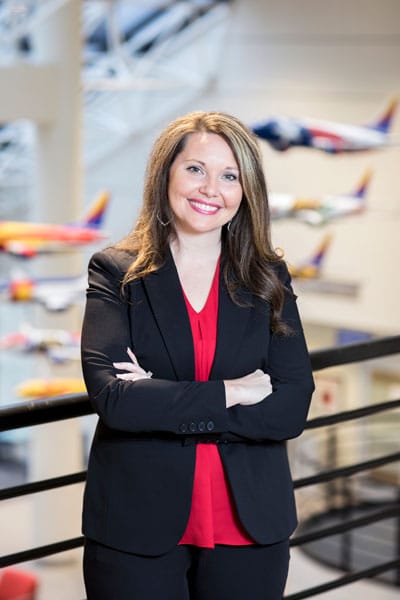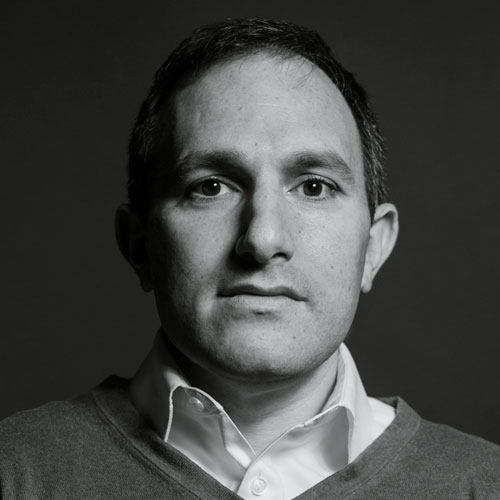Since 2011, Kembre Roberts has sharpened her expertise in health and wellness working at Southwest Airlines. Now, she’s ready to take on yet another new challenge to help improve and educate others about employee well-being at the company.
Roberts began her tenure at Southwest as a health and wellness program manager, a role she enjoyed for two-and-a-half years. Then, she transitioned to people manager, keeping her focus on wellness initiatives. For nearly four years, Roberts dove into the highly specific details of Southwest’s health and wellness programs that encompass physical, mental, emotional, and financial aspects of employee well-being.
But in December 2017, Roberts decided to change course to another role at the company: people manager, benefits and labor strategy. Whereas Roberts had been used to knowing the smallest details of the wellness programs Southwest offered its employees, her new role would allow her to steer the overall strategy and vision for these programs from a more holistic perspective.

“This is really challenging me to step out of the wellness zone and to really think about how our employees value their overall healthcare spend compared to their wellness, compared to their 401(k),” Roberts says. “And how do all of these finances matter to them for a total rewards package? So, it’s definitely stepping outside the wellness box to make sure that our employees are valuing the total rewards package they have today.”
To help employees get the most out of their total rewards packages, Roberts is focusing on employee education. Her goal is to educate individuals on how to navigate a complex healthcare system and how to maximize their dollars when they need to utilize medical services.
A major focus of this effort is making individuals aware of alternatives to emergency room visits, which are some of the costliest healthcare expenditures for individuals and companies, Roberts says. Since 2016, she has been coordinating with Southwest’s healthcare vendors to have them come on-site to discuss employees’ various options when they need to see a doctor.
These vendors educate employees about services such as the benefits of urgent care facilities, the difference between in-network and out-of-network providers, as well as help for individuals with chronic medical conditions who might be concerned about how to best manage an illness. Roberts has also partnered with healthcare providers to come on-site and help employees connect with a primary care physician if they don’t have one already.
“When you think about the corporate space and combining more of a population health model, that is pretty new to an employer environment,” Roberts explains. “We want to create more of a population health mind-set, create opportunities for individuals based on their disease conditions, create a way for people to utilize the community resources available to them, and then partner with local hospital systems or vendors to help employees make the best decisions, rather than communication just coming from a corporate environment.”
Roberts and her team initially helped roll out this partnership at Southwest’s call center locations, and in 2018 she is helping to expand it to airport locations in eight markets throughout the United States. But this expansion isn’t a matter of simply copying the approach used at Southwest’s call center locations. The company’s airport locations are vastly different from the call centers, which means Roberts needs to carefully tailor her approach to this project, she points out.
There are several differences between Southwest’s call center locations and its airports. For example, the call centers typically have employees all working in the same space on the same schedule. This makes it easier to ensure every employee receives the same information when vendors come in to educate employees about their healthcare options, because it’s easier to gather every employee together.
The airport locations, however, usually have more than one break room and a variety of work spaces and schedules, which creates challenges for communicating the same information to every worker, Roberts says. In addition to the human resources challenge, physical accessibility is another obstacle Roberts and her team face at Southwest’s airports that isn’t present at its call centers.
For instance, in the past, Roberts has led teams that coordinated with local vendors to bring a mobile mammogram unit to some of Southwest’s call center locations. In these settings, it’s easy to roll the machine into the parking lot, where it’s simple for employees to find if they would like to use that service. At airports, however, it’s difficult to find a spot to park that unit, and it’s also hard to find a place that is easily accessible to the most people possible, Roberts says.
Despite these challenges, Roberts is going to continue to strive to implement programs that will make the most impact for Southwest’s employees in its call centers and at its airports. To assess the impact of a particular wellness program, Roberts has spearheaded focus groups and created customer satisfaction surveys as a way for Southwest employees and vendors to provide feedback on the usefulness of the company’s programs.
“Data definitely drives decisions for us,” Roberts says. “We spend a lot of time with our medical carrier and our pharmacy benefits manager making sure that we’re selecting programs that can make a difference for our employees, make their overall healthcare experience better, and have it be something that they are going to enjoy and not become a burden for them to manage.”
Photo by Stephen M. Keller
As part of a global health and wellness healthcare company, our mission at UnitedHealthcare is to help people live healthier lives and help make the health system work better for everyone. Our solution combines the resources of our health benefits and services businesses. Visit www.uhc.com to learn more.

